by CMG Adrienne M
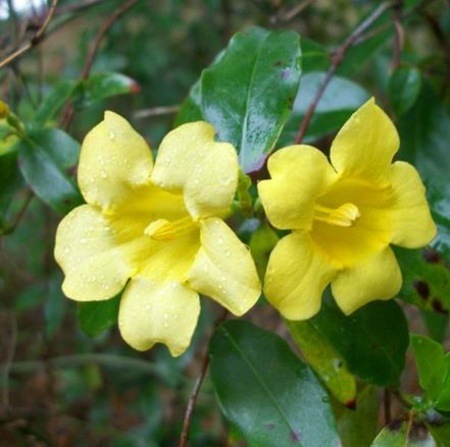
Yellow Jesamine© by Mark Hutchinson from Florida Native Plant Society
Everything that slows us down and forces patience, everything that sets us back into the slow circles of nature, is a help. Gardening is an instrument of grace. ~May Sarton~
One or two more weeks of unseasonably warm weather makes this a good time to get a head start on preparing outside areas for future planting. Mulch all garden beds and remove dead plants; plan to correct drainage issues; prune plants as necessary. Be aware, however, that the cold will come, not necessarily gradually, but more likely in a forceful rush. Then it will be time to gather up the seed catalogues, relax in an easy chair, and plan the beautiful things that will be sprouting and blooming in our spring and summer gardens.

Yellow Jesamine Vine© by Ginny Stibolt at the Florida Native Plant Society
- Yellow Jesamine, Gelsemiaceae, is one of the earliest plants to bloom in south central Texas. Also called Carolina Jasamine, this evergreen vine stays fairly bushy and compact when it’s grown in full sun. In shadier spots, it will climb up trees and shrubs as it tries to get closer to the sunlight, with the vines reaching up to 20 feet. In the wild, Carolina jessamine is typically found in open woodlands and along roadsides. In home gardens, it’s a great vine to use on arbors, trellises, and to drape over fences. It can also be planted as a ground cover and works well along steep banks. The vine is somewhat drought tolerant but will perform best if planted in a rich soil and watered regularly. It tolerates frost and has few disease or insect problems.
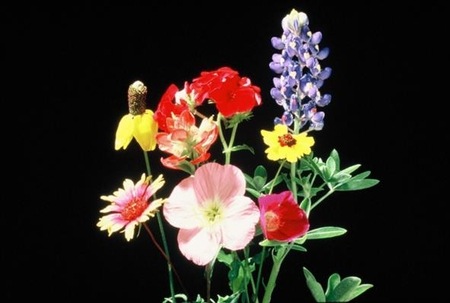
Wild Flower Arrangement from WildseedFarms.com
- Some of the wildflower mixes for blooming in late spring into summer (those without bluebonnets) can be planted in Jan-Feb-March. There are several Texas blends available from Wildseed Farms near Fredericksburg, Texas.
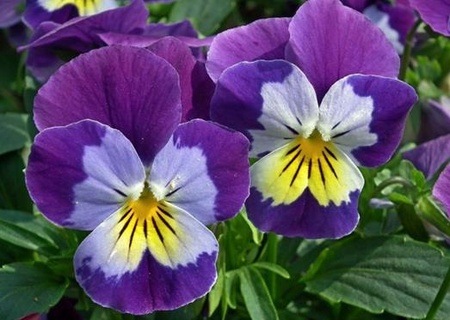
Pansies from almanac.com
- PANSIES are the best flower for winter landscapes in Central and South Texas, advises David Rodriguez, horticulturist at Bexar County AgriLife. They will perform admirable when planted in a sunny, raised bed, incorporated with slow-release fertilizer. Plant pansies when the soil temperature is between 45-and- 70 degrees F; warmer soil will result in leggy plants. Water every day for 5 days, then twice a week thereafter, and mulch the beds up to 2 inches. Pansies are available in a wide assortment of colors, such as, yellow, red, blue, white, maroon, and orange, making them a bright and cheery addition to a winter garden. Use the Texas A&M Agrilife Bexar County website for information on many gardening topics.
- Reach out to other Texas A&M AgriLife Extension services and other area resources for more gardening know-how articles. “Austin Grow Green” has Fact Sheets in PDF format on topics such as lawn care, landscape design, rain gardens, and tree care, along with information on garden insects and problems.
- The Texas A&M AgriLife Extension Education in Travis County website offers information in Native Bee Habitats, Butterfly Gardening, Composting and Soils, and many more topics, as well as links to the Texas A&M AgriLife Extension Gardening Library, and eLearn Courses.
- Cold sensitive plants in the garden and in containers (such as Esperanza and lantana) will freeze to ground level when it gets extremely cold. Before that happens, they should be cut back to the root ball and covered with 3-to-4 inches of mulch. Uncover them when warm weather returns and they’ll bloom again.
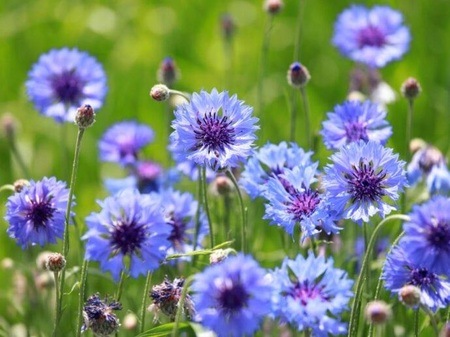
Bachelor’s Buttons from GardeningKnowHow.com
- Bachelor’s Buttons (Centaurea cyanus), also known as cornflowers, are one of the many flowers that bloom in early spring. The best time to plant bachelor buttons here is in early spring, two to three weeks before the last frost. They need only 65 days for growing from seed to bloom.
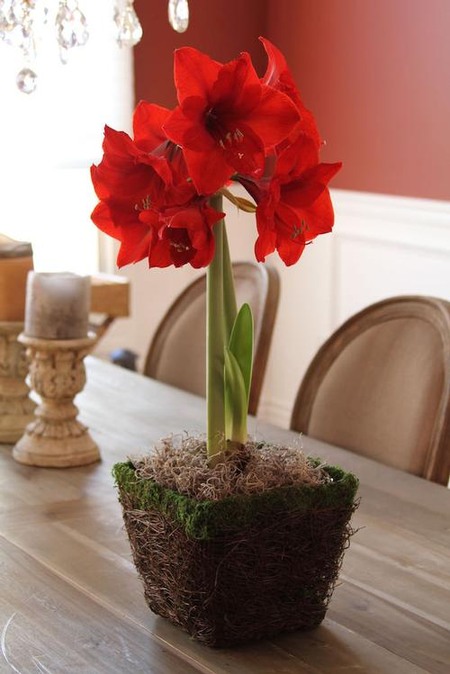
Red Amaryllis from LongfieldGardens.com
- Get your holiday amaryllis to rebloom! Read the article from Longfield Gardens for details on how to accomplish that.
- Make a resolution to start and keep a gardening journal. Monthly entries can include notes about the plants that are blooming in your yard and elsewhere, those in your garden that need special care, and where the sun’s shadow is that month in your yard or on the patio. This information will help when selecting plants for seasonal growth. The journal is a good place to list the plants/seeds that need to be ordered in the future.
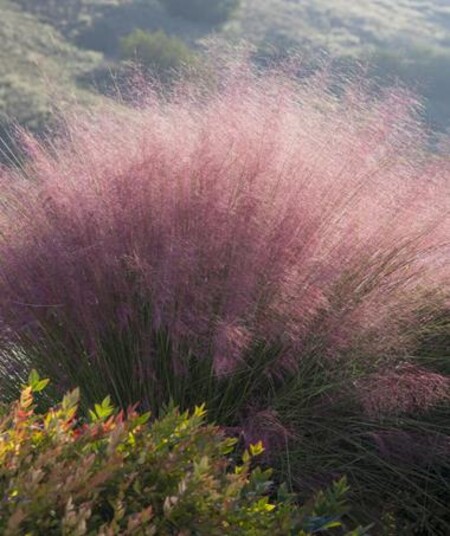
Plumetastic® Pink Muhly Grass by Jennifer Cheung from Monrovia.com
- Ornamental (clumping) grasses can provide a design element for the garden by adding gold, blue, purple, and other colors, and help in controlling the flow of water runoff in the landscape. The Plumetastic© Pink Muhly Grass shown here, has showy foliage with an exceptional, upright, slightly arching form, providing clouds of vivid 2-to-3 feet tall purple plumes in late summer through fall. It’s best to plant new ornamental grasses now, or in early spring, giving them time to develop a good rooting system before the stresses of summer. Other grasses, such as the Mondo Grasses and Fescue, have a lower profile. There are other options and guides to garden designs from Monrovia.
- Shrubs are dormant this month, making it a good time for pruning. This does not apply to spring-blooming plants, however, which may have already set their buds.
- If you are lucky enough to still have herbs growing in the garden, dig them up and place them in pots. Set them in a sunny south window, and care for them as you would houseplants.
- Lawns do not need much care now. The grasses are dormant and will not require fertilizer until March. Dig up any stray weeds that might pop up. Use a fan shaped plastic rake in a sweeping motion to gather leaves.
- Use a warm day to give some care to your tools. Sand wooden handles to avoid splinters, sharpen or replace blades on hand pruners and loppers, then give them all a good coating of a silicone lubricant. List in your journal any new tools you’d like to purchase.
- We have been gaining daylight since the winter solstice on December 22, 2024. The gain has been minuscule at first, just a matter of seconds a day, but will steadily grow until daylight expands by 3 daily minutes per day in March, according to Alamac.com.
Sources: These and other sites: aggie-horticulture.tamu.edu; gardeningknowhow.com; Monrovia.com; southernliving.com/plants; gardeningknowhow.com; aggie-horticulture.tamu.edu.